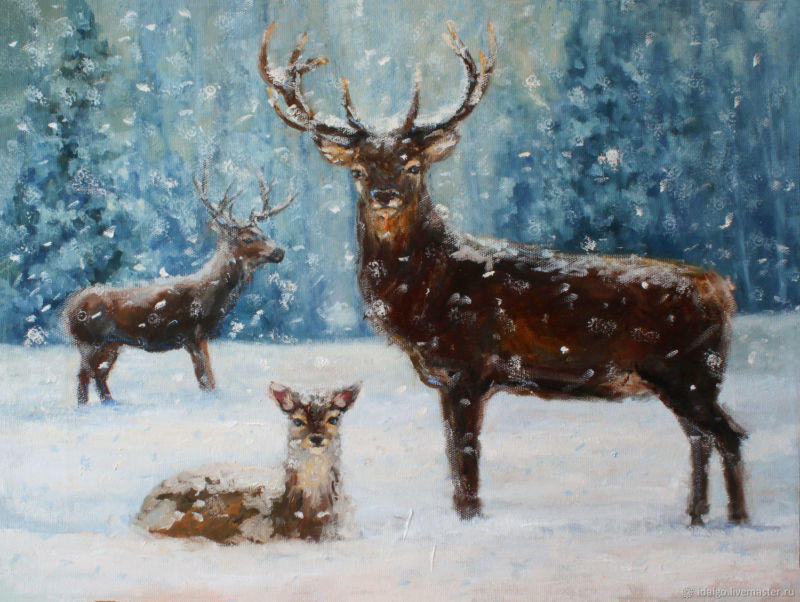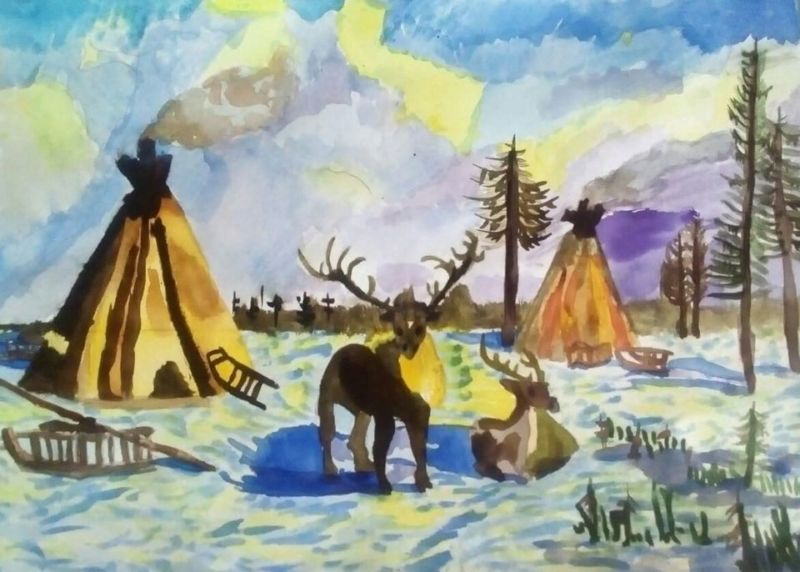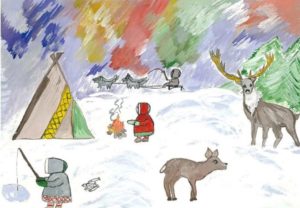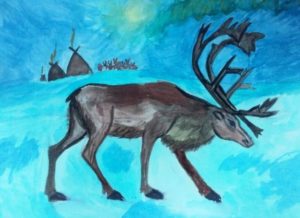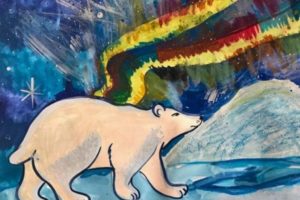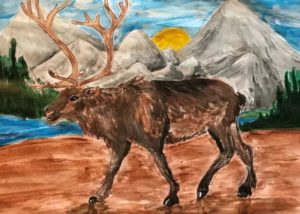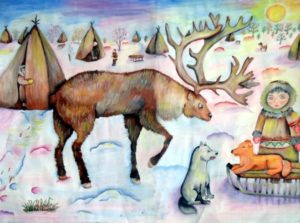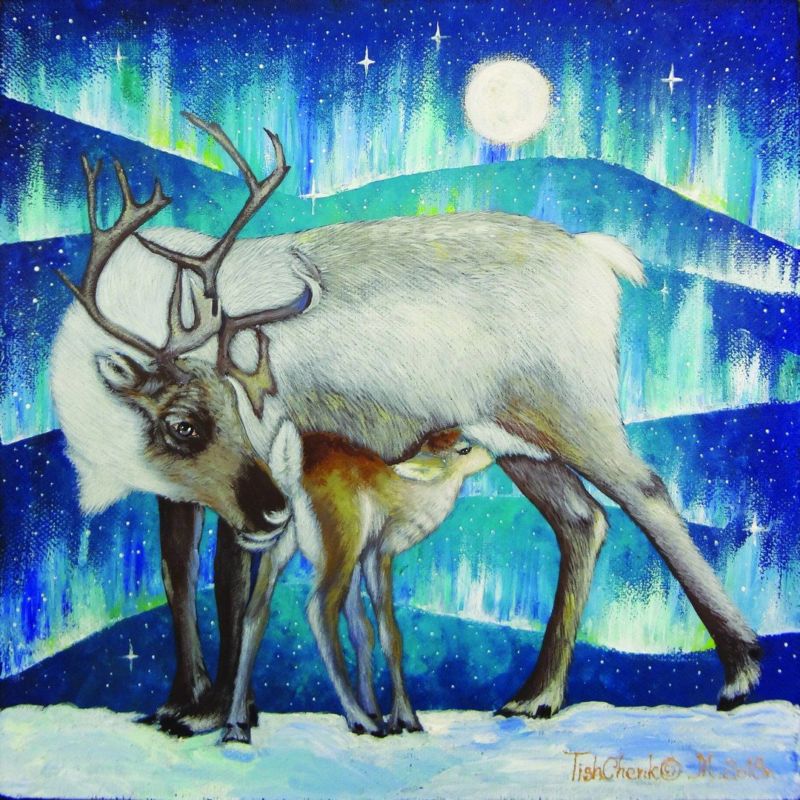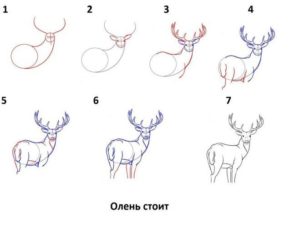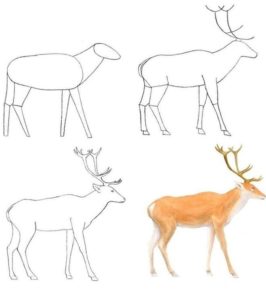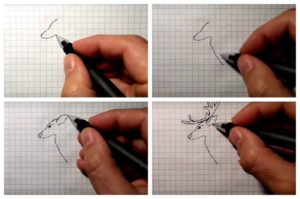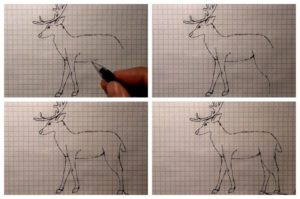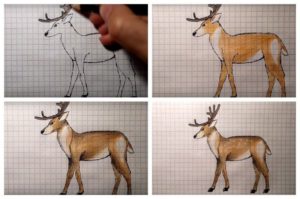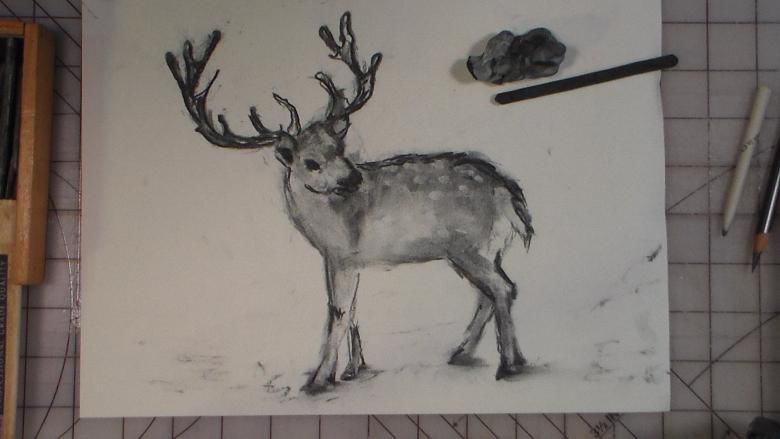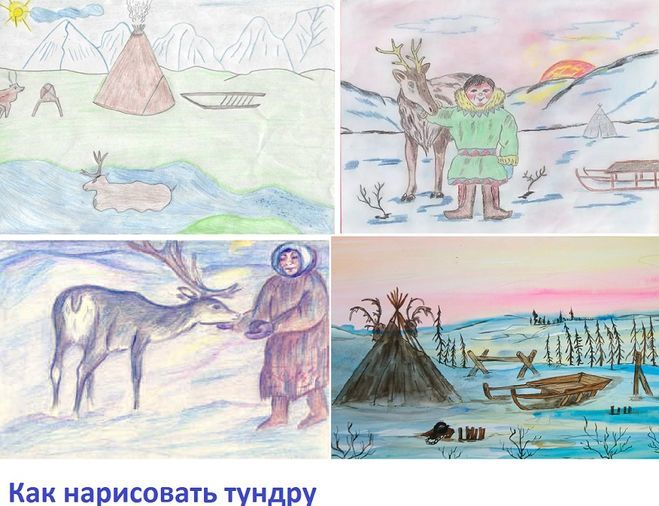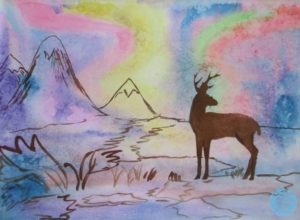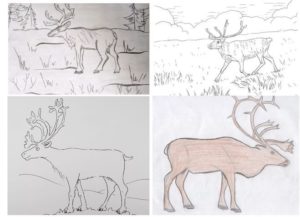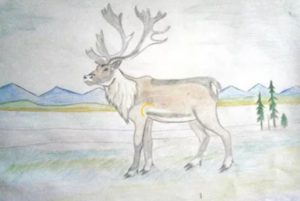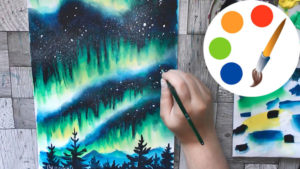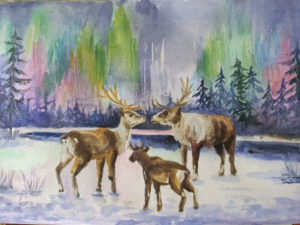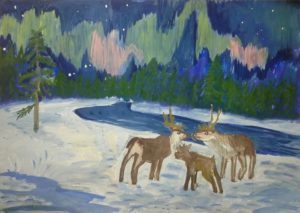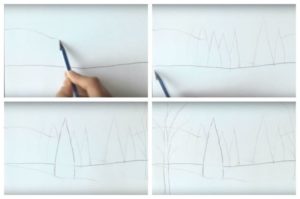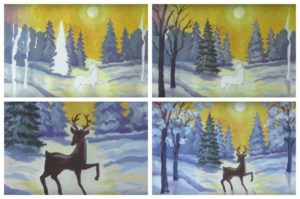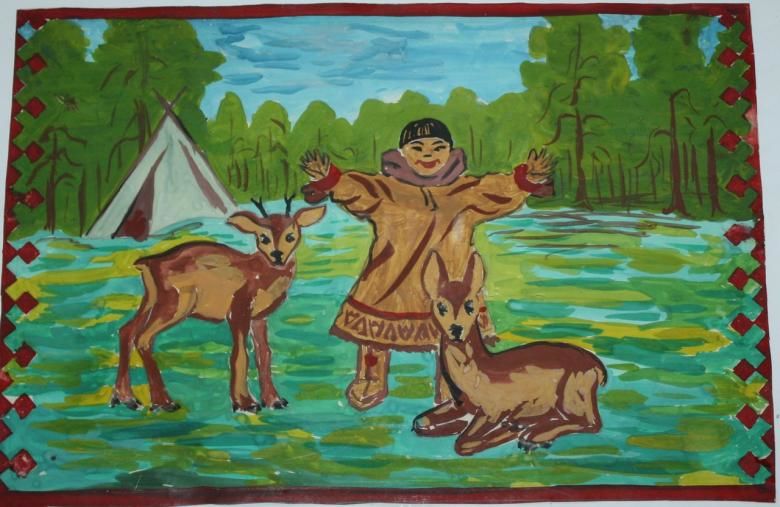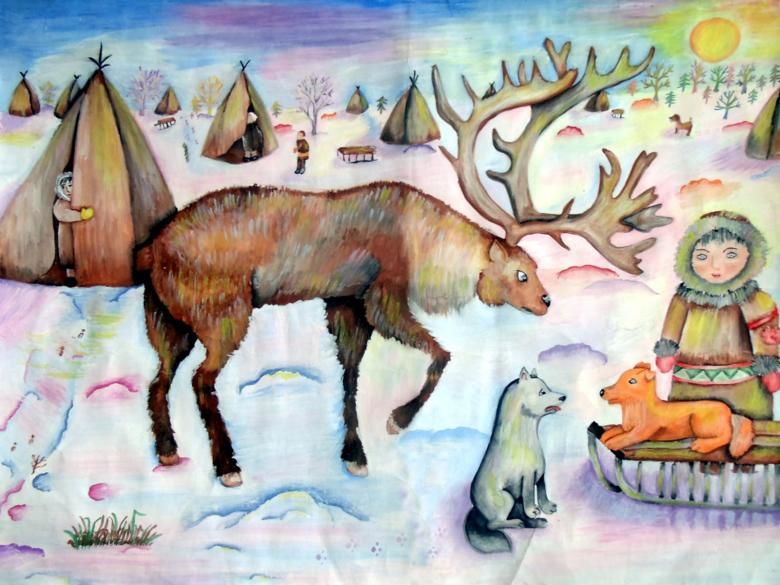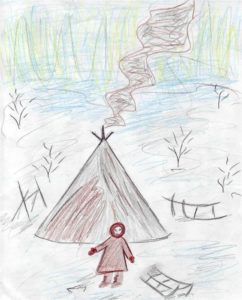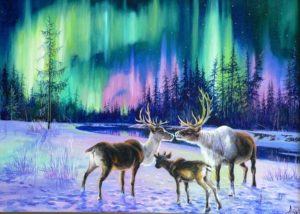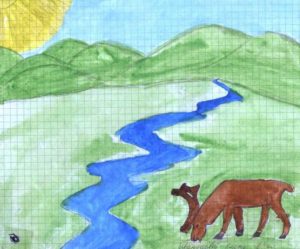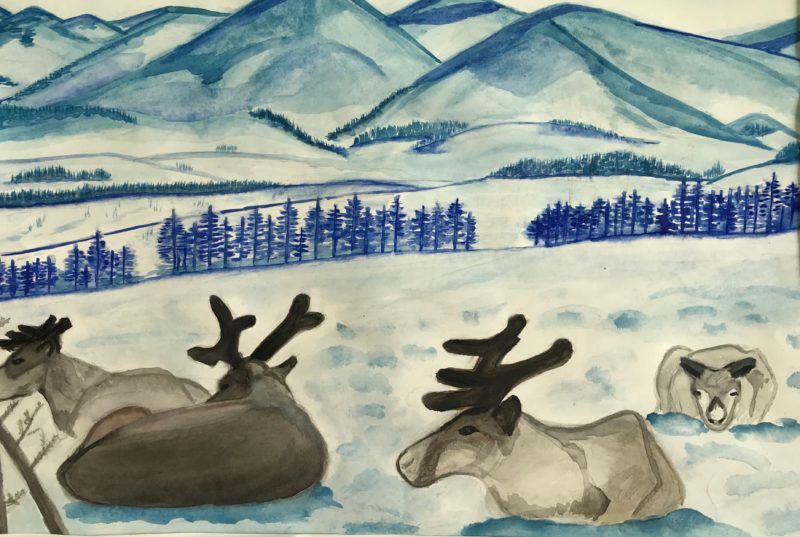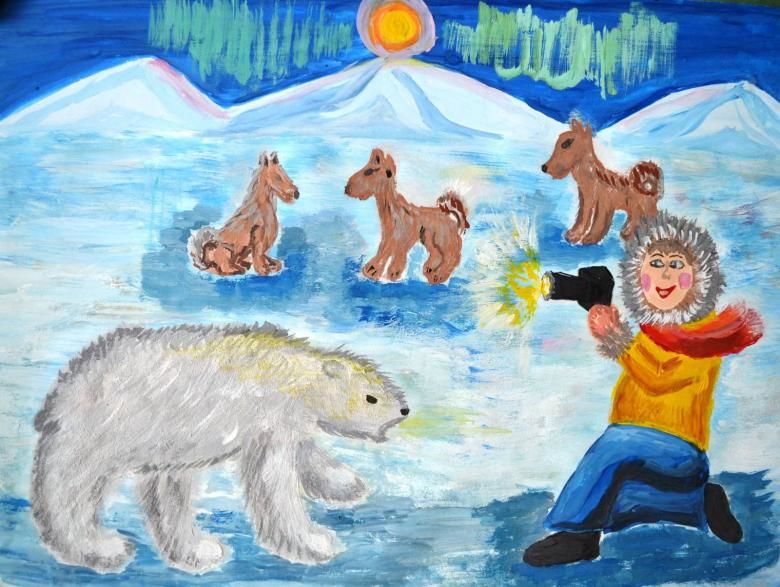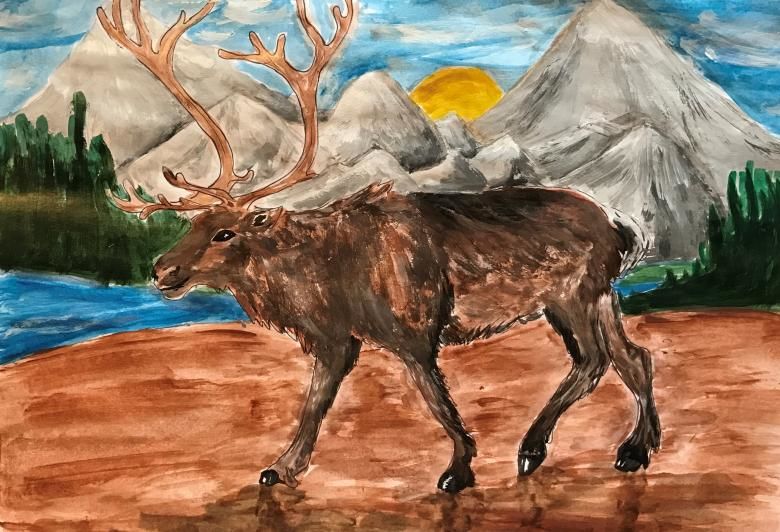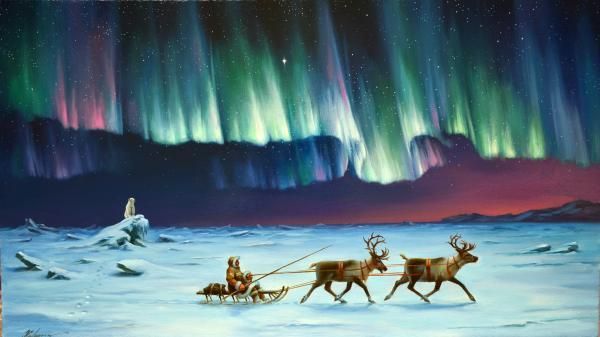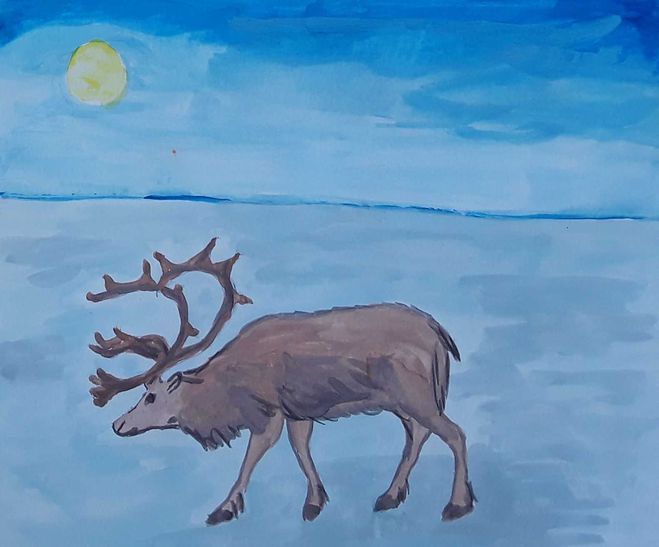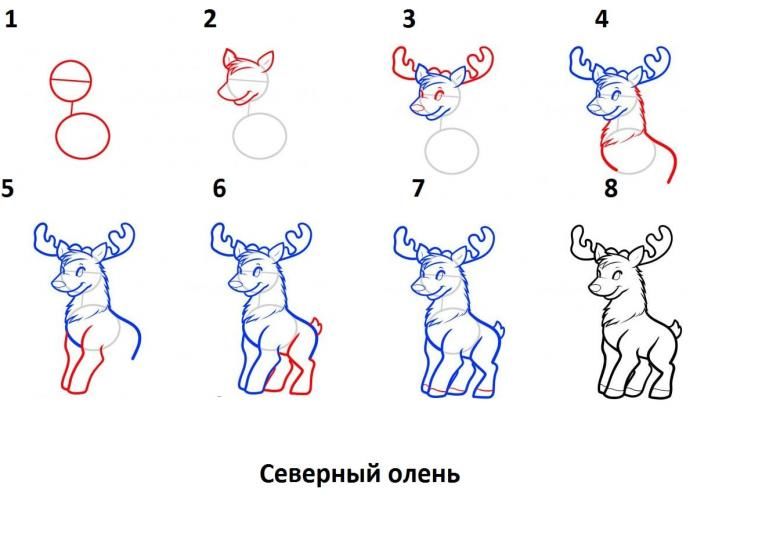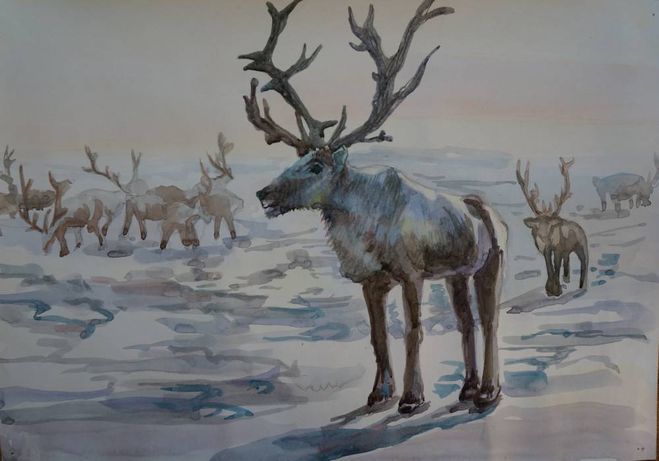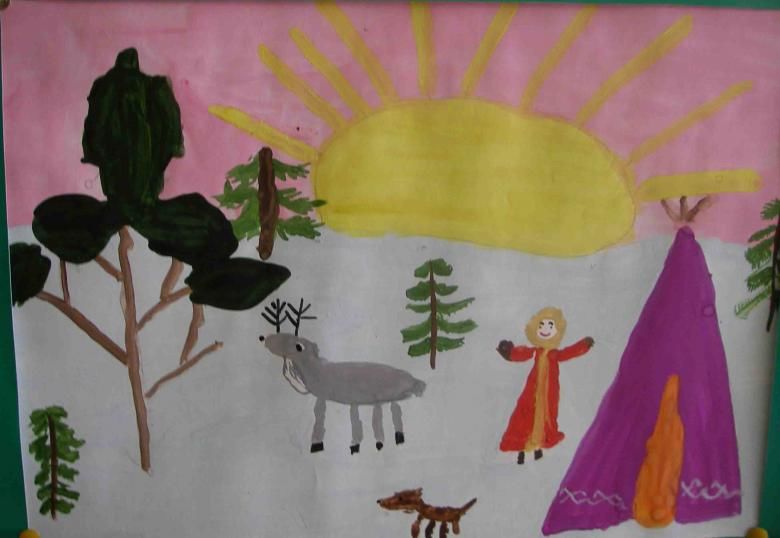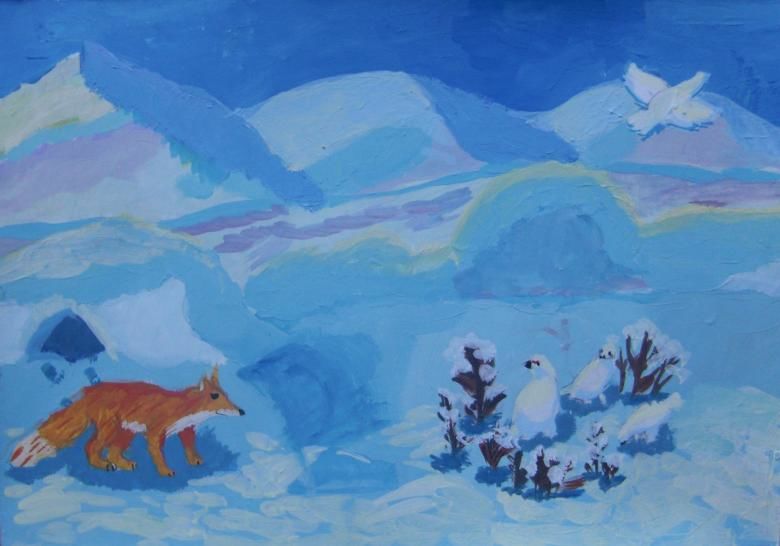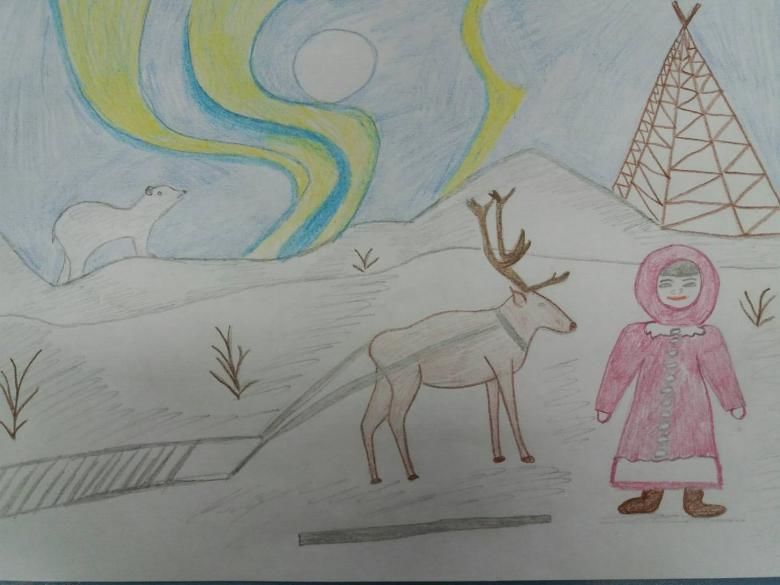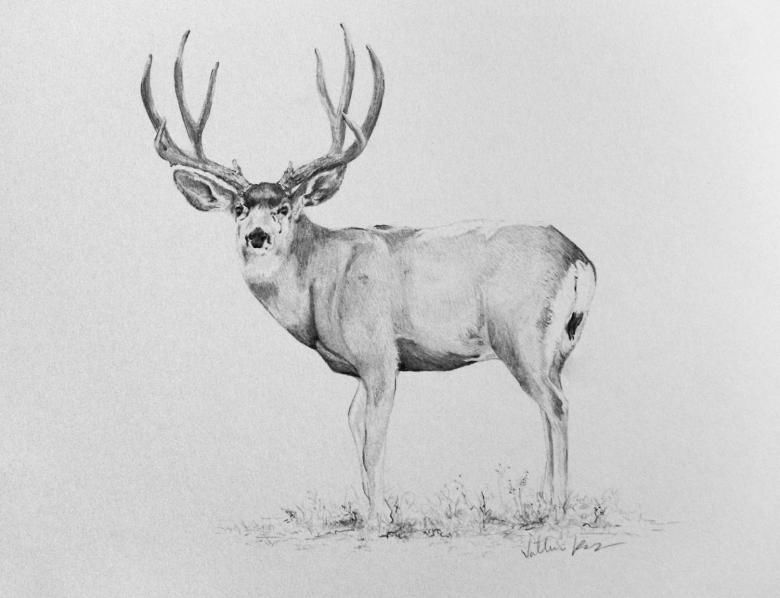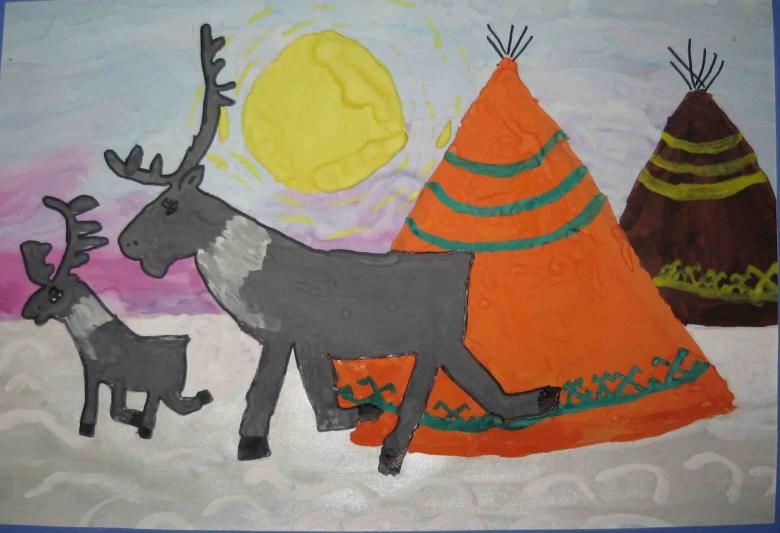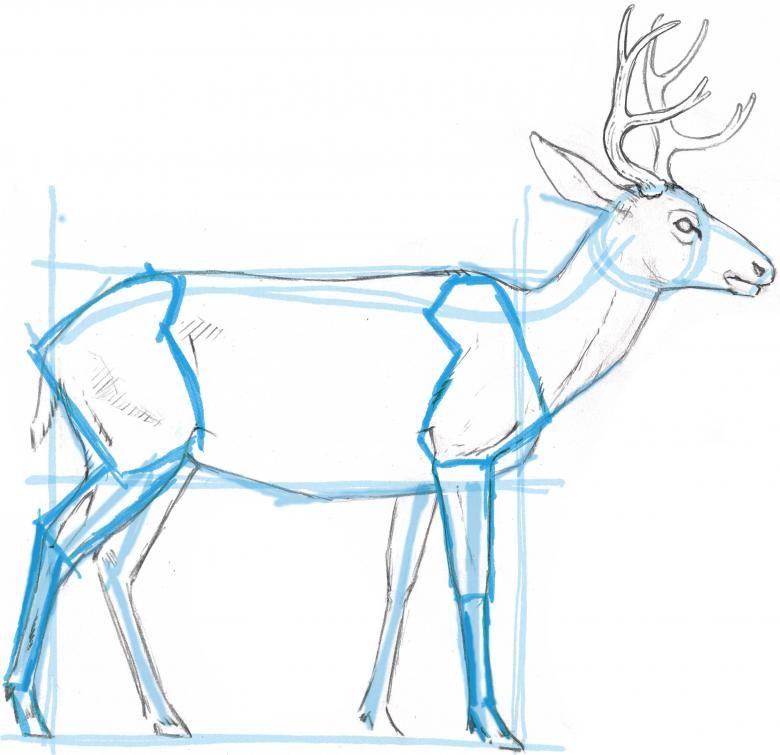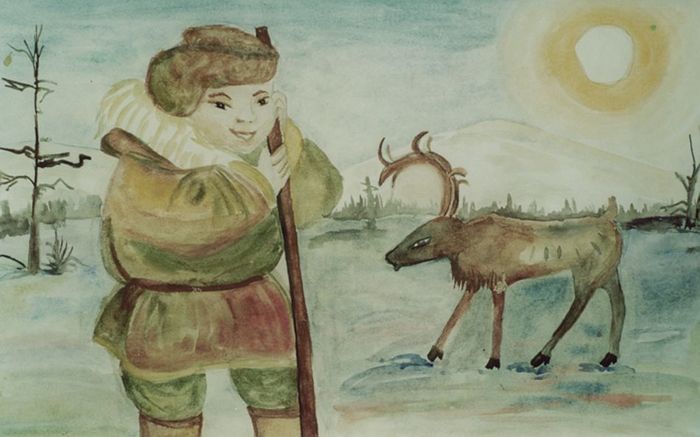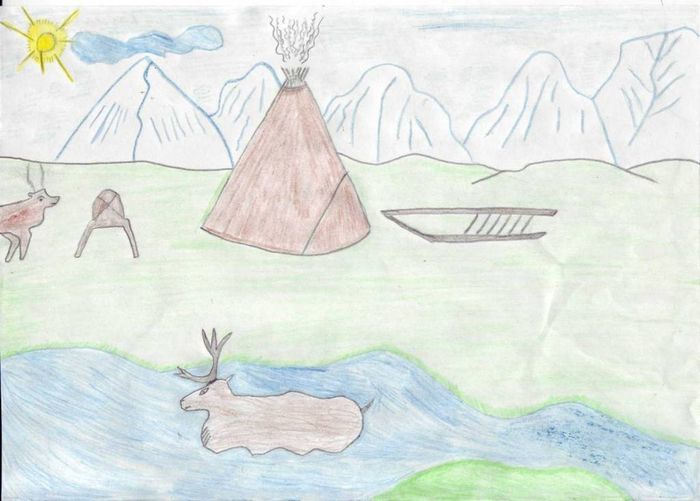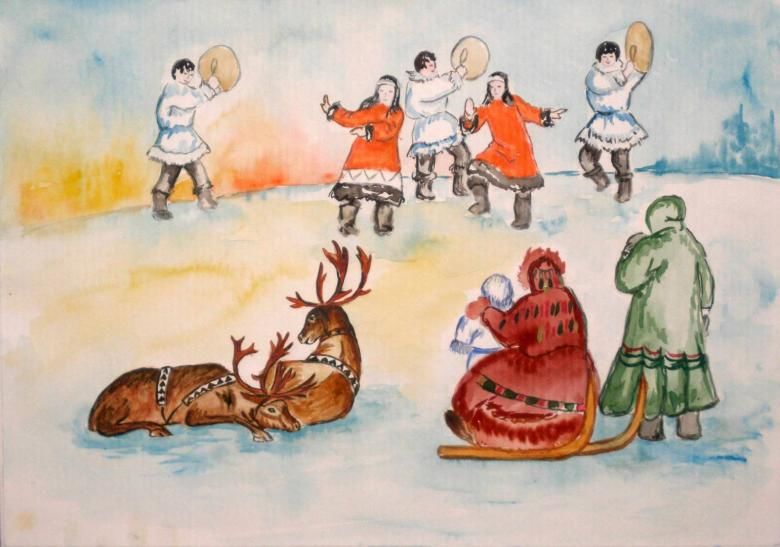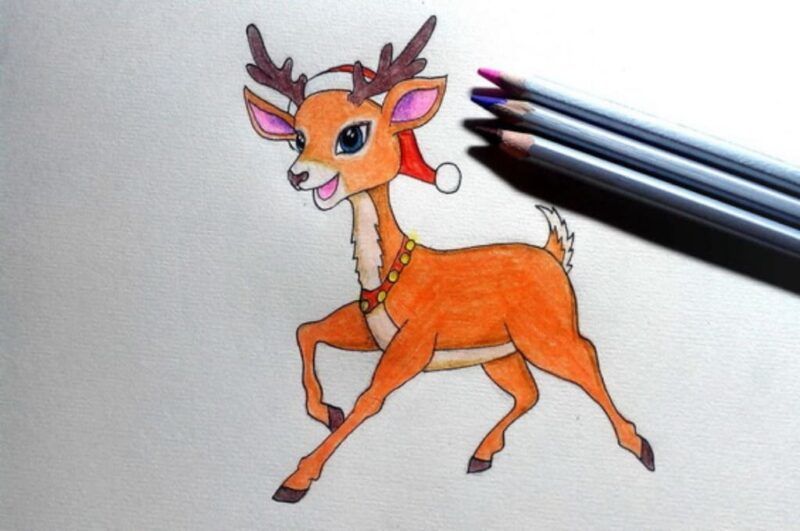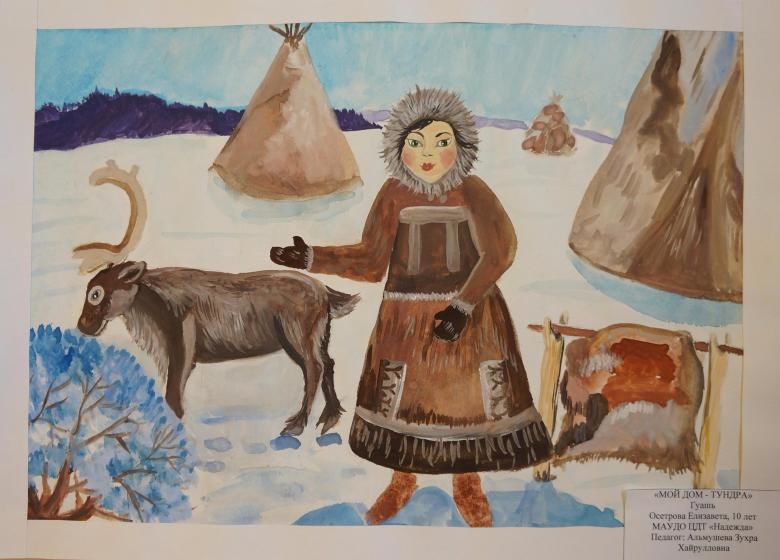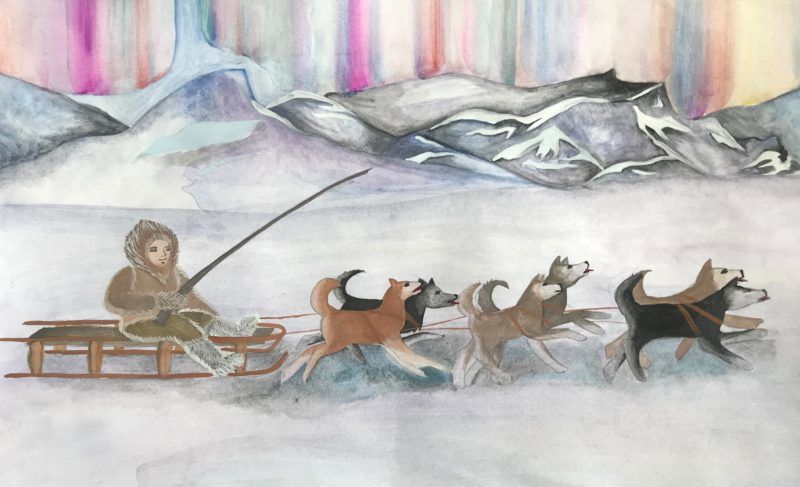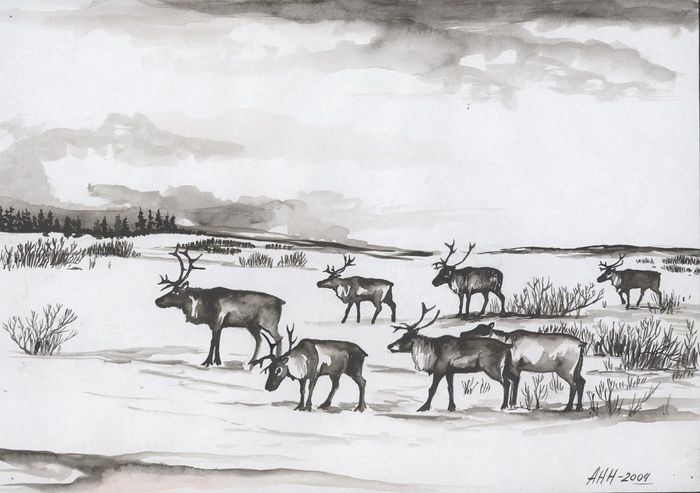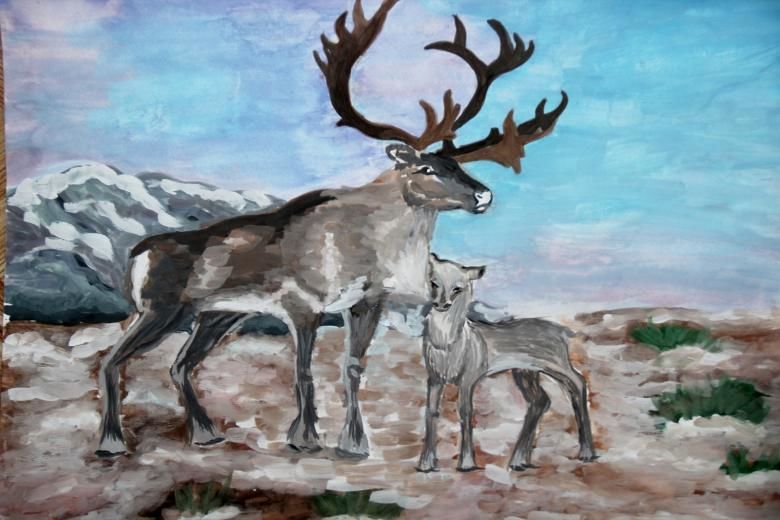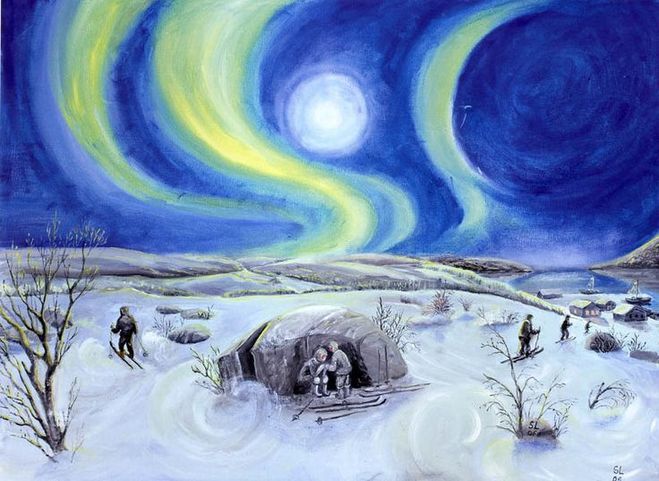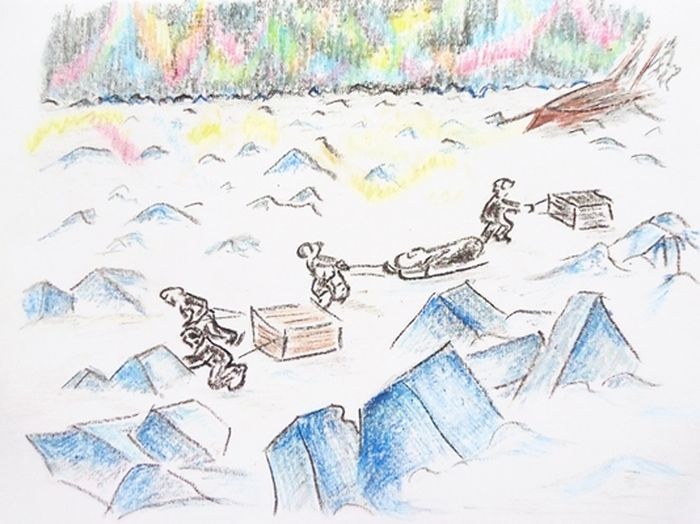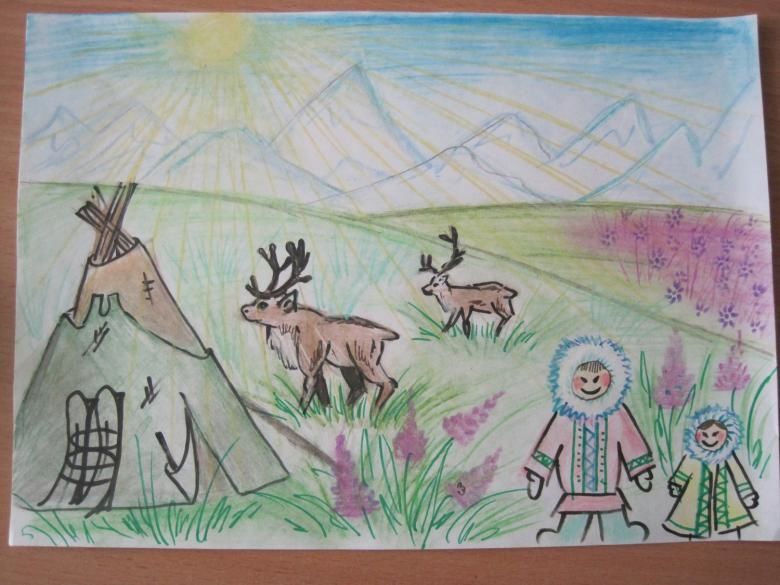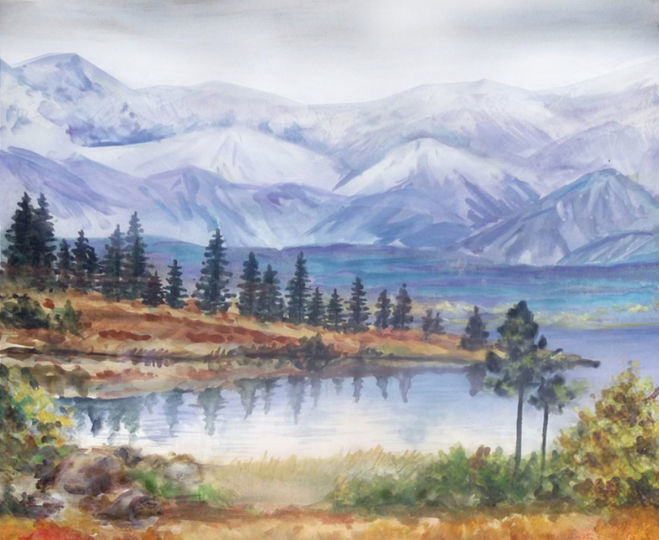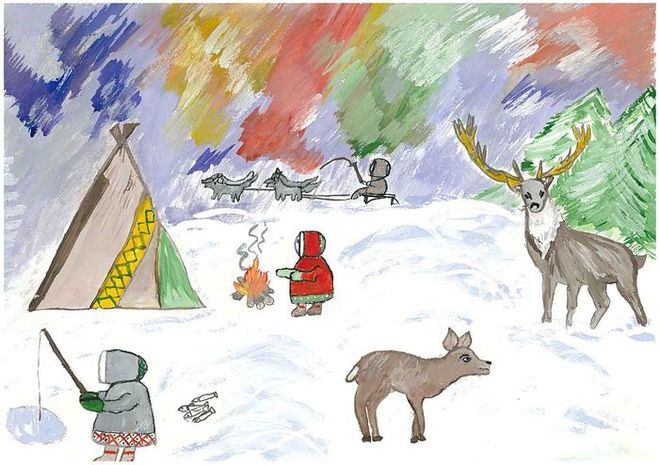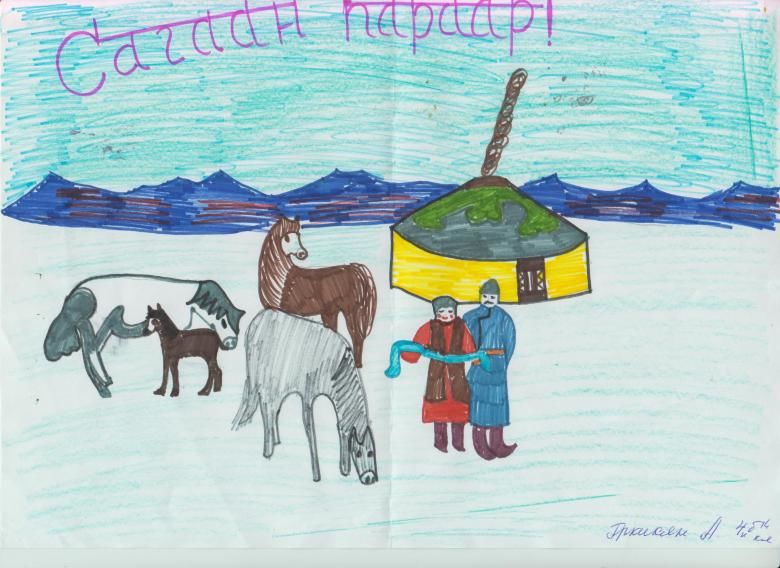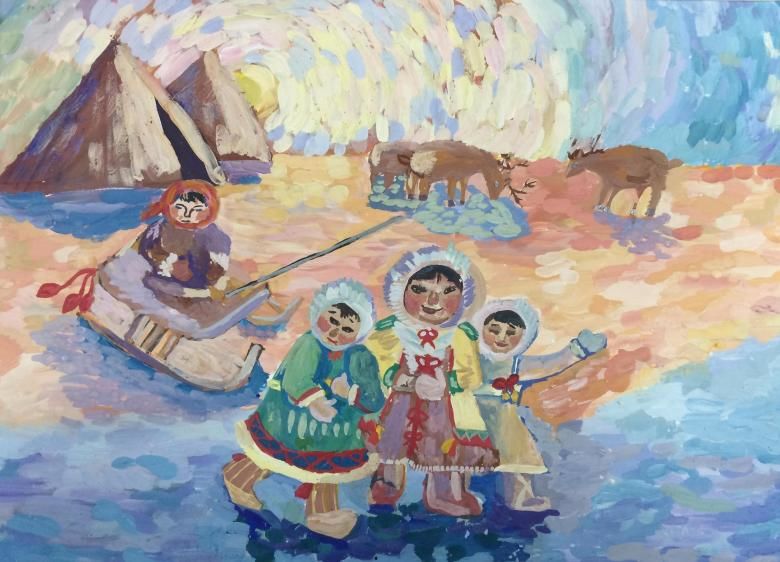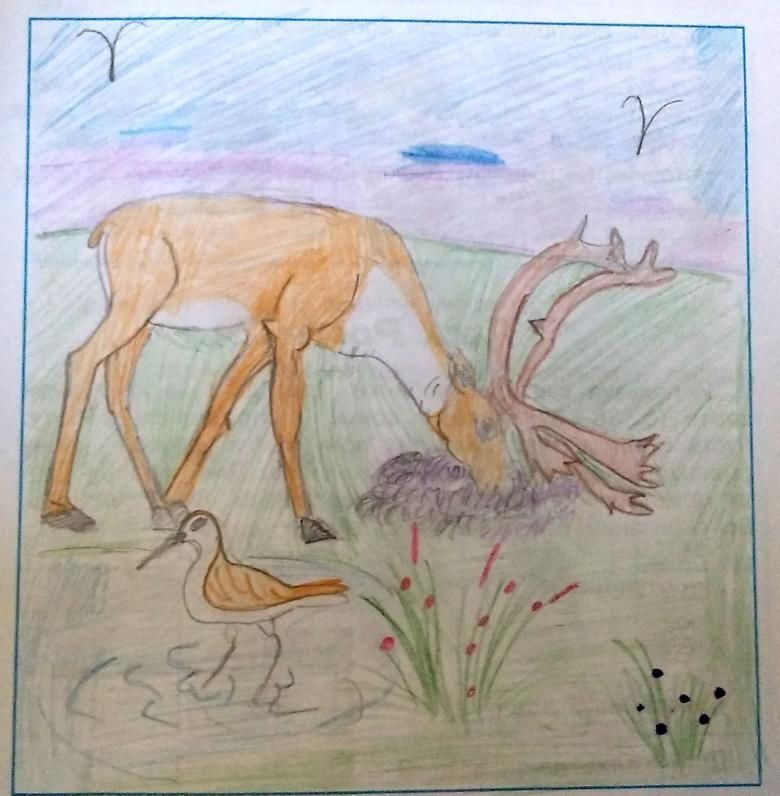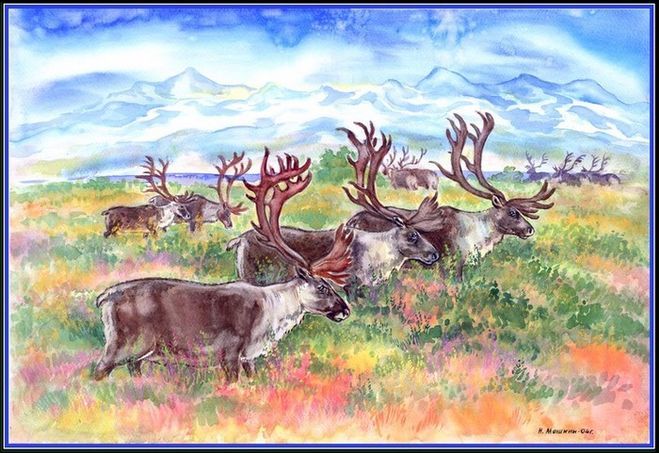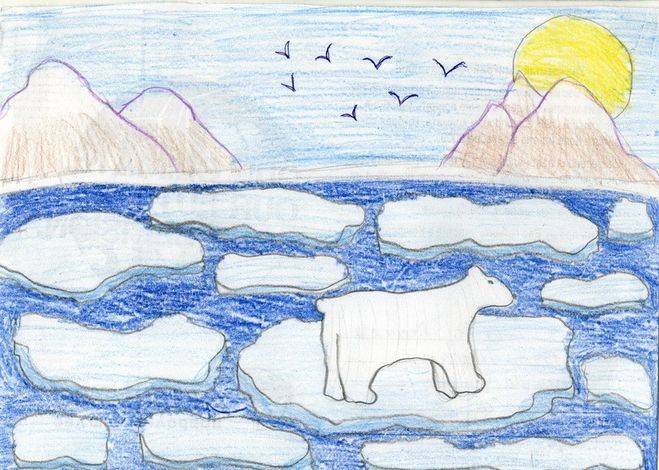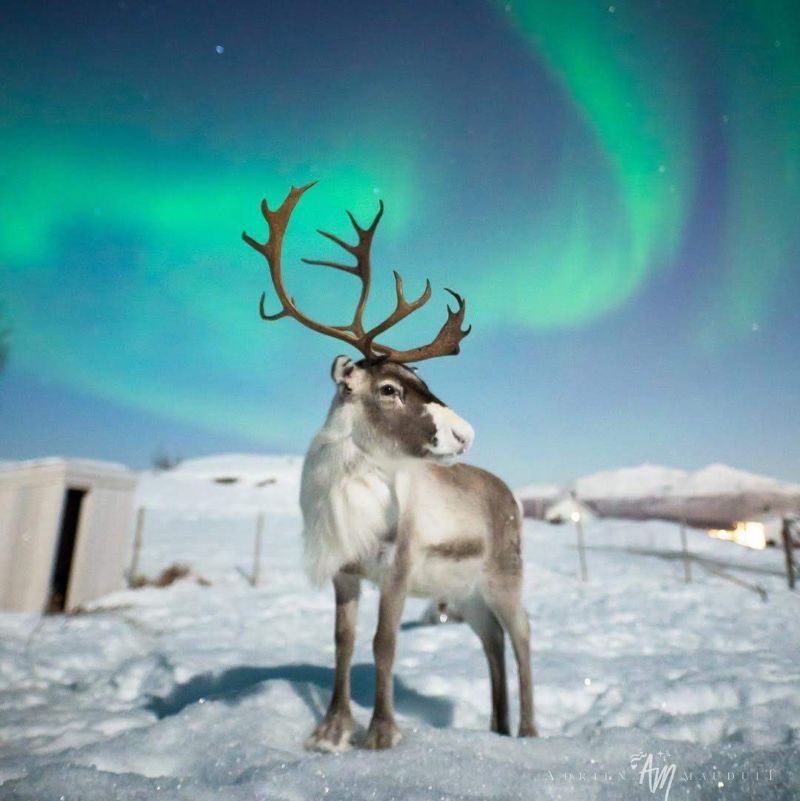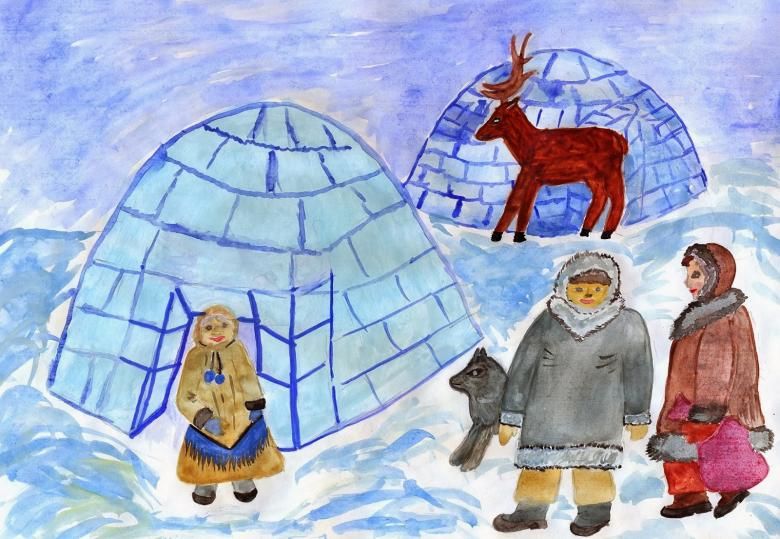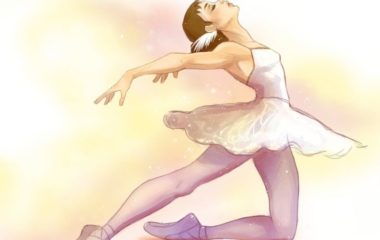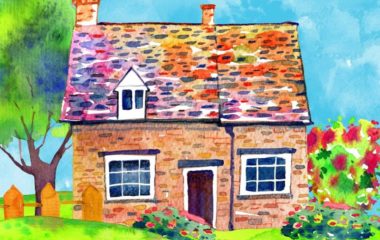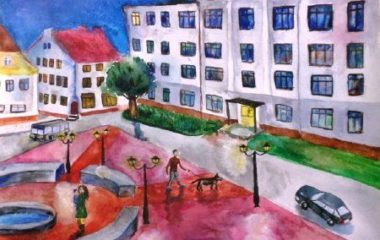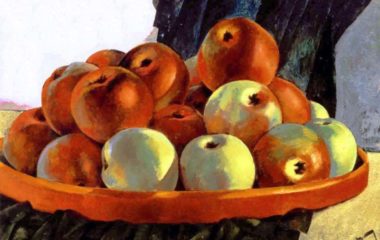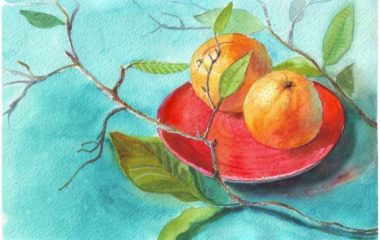How to draw the tundra with pencils and watercolors - step-by-step instructions for beginner artists
When there is a desire or need to draw the tundra, an inexperienced artist has a whole host of questions, ranging from the appropriateness of the technique, ending with the elements that should be drawn on the landscape.
Therefore, let's try to deal with this issue in as much detail as possible, so that after reading the article there are no more doubts and controversial points.
Materials you need for this picture
Depending on what is available and how colorful and juicy you want to get the final image, you can apply to create it:
- Watercolors - the image will turn out quite tender and realistic. Such a landscape picture does not have pronounced colors, they are muted by the frostiness of its cold climate. You can take regular school, if the picture does not require detail and richness of color palette, in all other cases it is better to use professional watercolor sets. A good alternative can be watercolor pencils. Work with them is much harder - to mix the colors in this case it becomes quite problematic.
- Pastels are also used - it is necessary to work with them with some experience and skill. It is more difficult to correct flaws with this material.
- Colored pencils can be used to depict the tundra - choose sets, with a large number of shades, to create an image.
- Paper that is of good quality to create a drawing - it should be quite dense, slightly rough and quite well absorbent - especially when using paints or watercolor pencils. Preferably, choose one with a label showing a density of at least 200 g/m².
- Eraser soft and hard.
- Brushes made of columnar or squirrel fur. Synthetic ones will be more difficult for a child to work with.
The elements of tundra pattern
For the tundra drawing to correspond to reality, it is important to consider what the surrounding world in reality corresponds to this region. The drawing may depict:
- A steppe area that is covered with low-growing vegetation. It is important that the colors and the entire surrounding landscape convey the harshness of the climate.
- Although there are practically no tall trees in the tundra, individual stunted plants such as spruces, dwarf birches, and low bushes are present.
- Tundra animals are small lemmings that look like gophers, obligatory reindeer that make up the main coloring, and beautiful snow-white polar owls.
- It is possible to depict the indigenous population and their distinctive dwellings. Note that the national dwellings are igloos in winter. They are made of ice blocks. And in the summer and when there is no snow - the locals put yurts. They are cylindrical in shape tents, which are made of animal skin and fabric.
- Depicting people, it is worth remembering about the national clothes, which are long fur coats, decorated with ornaments. They are worn for most of the year - it is almost all the time cold here. When it gets warmer in the tundra, the long floor-length fur coats are replaced by shorter, wide ornamented belts that are belted around the woman's waist. And for men the pants are supplemented with peculiar jackets, which are also belted and have a fur trim around the edge. Of the traditional elements of life the sledge harnessed with reindeer is obligatory. Sometimes a dog sled is used, so this friend of man can also be depicted in the picture of the tundra.
Next, let's look at the basic techniques and workshops for depicting the tundra.
The first step is to work with a pencil
With the elaboration of pencil elements it is worth starting any drawing in color. After all, this will allow you to mark out a sheet of paper, determine the location of key figures and make the right emphasis. Working through is worth conducting in the following key:
- Designate the horizon line, separating the part of the sheet under the ground and under the sky.
- Mark the places where the vegetation will be depicted.
- If a yurt or igloo is planned, their outer contours must be marked.
- Human figures and images of animals are worked out only in the sketch, i.e. the proportions, the location of the head, torso and legs are marked.
When tundra elements are worked out with a simple pencil, proceed to the use of color.
Painting the tundra with colored pencils
To make the tundra, drawn at the first stages with a simple pencil, shine with colors, it is enough to take a set with a large number of shades and perform the following steps:
- First draw the main details, which are the center of the composition. These can be trees, a yurt or igloo, figures of people and animals. The pressure on the pencil should be made in this case quite intense, so that not only the image, but also the coloristic solution becomes accentuated.
- Then, by applying lighter pressure, begin to perform the remaining parts of the drawing with a pencil. These may include - low vegetation, the general shade of the field, the color of the sky, other, smaller elements of the image.
- Then the elements, where the clarity of the contour is not the key, are shaded. As a rule, these are parts of the background, on which the rest of the main images are performed.
It is important to follow the recommendations in terms of technique:
- If pencil strokes are applied, which then will not be shaded, choose one direction. It should coincide with the main contour lines or correspond to the logic of the image. Representing a fur on a deer, make short strokes that go on a muzzle - from a nose to an ear, on a torso - from a back down to a stomach, on legs - along the limbs.
- The other lines that are not key and do not require clarity should preferably be shaded. This includes the background of both the ground and the sky. Stroking is done with the pad of your finger or a piece of soft paper.
- You can create a complex shade by alternating strokes of different shades. Try different variations of mixing on a sheet of paper in advance.
The technique of painting tundra with watercolors
With watercolors, the technique will be slightly different. In this case, to make the image of the tundra for children as easy as possible, you should take advantage of the application of several layers of the image:
- First, a pencil outline is worn. It is made with a simple pencil to determine the location of key elements.
- Watercolor paint is taken, the shade of which will match the color of the sky. It is necessary to put a liquid composition on a brush, so that it is possible to apply it homogeneously enough over the entire area of the sheet.
- Try to distribute it so as not to leave any unpainted elements or parts where the shade will be very different from the main contour, unless it was intended in the creation of the image itself.
- Similarly, paint the bottom part of the picture, where the area of the tundra itself is located. At the junction line of the two areas, try to avoid mixing the paint.
- Be sure to let the pattern dry, it is extremely important to avoid the color spots spreading during the further creation of the image.
- Only after the background is completely dry, you can draw the rest of the tundra image.
- In this case it is important to take thicker paints and not to dilute them with water. It is this technique that allows you to achieve a clear outline and draw even the smallest elements. But, there is one important guideline that is very important to follow - if the image requires the application of several paints that are applied on top of each other, each previous layer must be completely dried. Only then can the next layer be applied.
As for the image of the tundra itself, to achieve maximum believability and to be able to trace all the smallest elements, it is allowed to apply both paints and pencils at the same time.
This gives the artist a better chance to maneuver in terms of recreating the picture of the taiga with all of its characteristic elements. Therefore, choosing this or that way of drawing, it is necessary to define at first how much detail one would like to work out the final image.
And using the presented master classes, you can get a really realistic image, even if the taiga will draw a child who does not have the proper experience and skill with paints or pencils.

